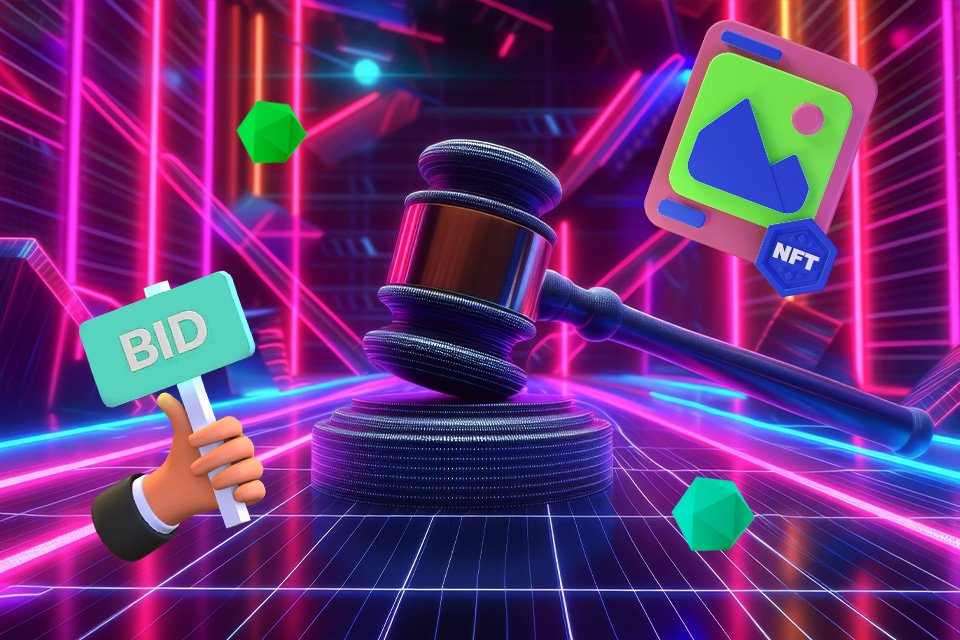The concept of NFT auctions has sparked a fervent interest and truly emerged as an “it thing,” with a boost in use cases across different sectors, from art to sports and finance.
What is an NFT Auction?
An on-chain NFT auction often carries similar elements to those of the traditional art auction format. Usually, in an NFT auction, creators list their NFTs for sale, and buyers place bids according to the minimum bid amount. It can be conducted on multiple NFT marketplaces like AngryMonky, on a website, or at traditional auction houses like Sotheby’s and Christie’s.
After owning an NFT in an auction, you can either keep it in your wallet or sell it on any secondary marketplace.
Common NFT Auction Types
1. Timed Auction
The timed auction, or English auction, is the most well-known auction model we all know of. Here, the highest bidder purchases the NFT within a specified time frame. It was first popularized by online platforms such as eBay, which allowed for mass listings and competitive bidding.
2. Dutch Auctions
In Dutch auctions, the price of the NFT gradually decreases from an initial bid. The deliberate overpricing of the opening bid allows the price to decline progressively until a buyer accepts the offer. Dutch auctions, synonymous with efficient price discovery, resonate in TradFi and IPOs (Initial Public Offerings).
3. Hybrid Auction
Some marketplaces combine elements from various auction types to create hybrid auctions. For instance, an auction may start as a Dutch auction and transition into an English auction upon reaching a bidding threshold. These auctions offer versatility and cater to diverse bidder preferences.
Navigating the realm of NFT auctions entails an understanding of the various auction models, strategies, and factors influencing auction dynamics.
Explore our blog for insights into NFT Auction strategies and pricing determinants, empowering you to navigate through NFT Auction.
For more queries, email [email protected] or reach out to our Global Telegram community.


